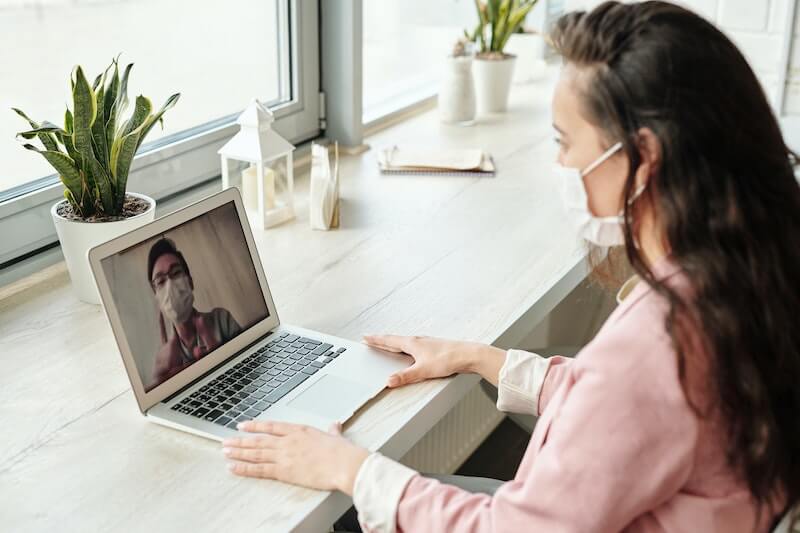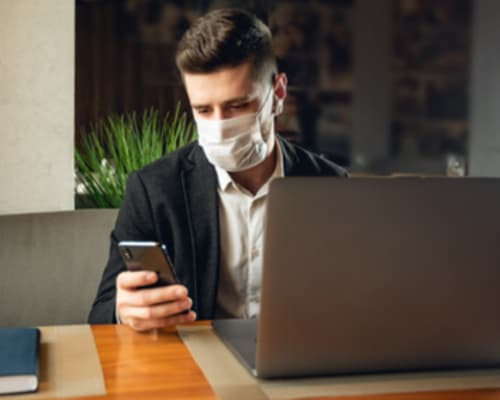The world of work has drastically changed since the start of the Covid-19 crisis, due to the obvious urgency to raise the level of health standards in every company. May 11 marks the return to work for many employees, who will return to their usual work environment... with a few exceptions!
On May 3, 2020, the Government published its national deconfinement protocol for businesses. The goal is to ensure the health and safety of employees. Failure to comply with these measures may result in the immediate closure of the company.
Let's explore together all the measures that companies must comply with to welcome their employees in the best conditions.

The national deconfinement protocol contains several measures designed to avoid the risks of exposure to the virus, assess risks that cannot be avoided, and prioritize collective protection measures, giving them priority over individual protection measures.
Here are some must-do things you'll need to take care of:
- Respect for barrier gestures and social distancing.
- The limitation of capacity per open space: the Government has chosen to retain a « universal » criterion of maximum occupancy of spaces open to the public and in the workplace, set at a minimum of 4 square meters per person.
-
Managing people flow: Besides reorganizing work to sequence processes, employers will also look at how the workspace is organized to avoid or minimize people crossing paths.
-
Providing personal protective equipment (PPE): This is in addition to collective protection measures. It's a good idea to provide employees with masks and their usual equipment as much as possible. Employers can provide FFP1 masks or alternative non-medical masks for general public use. Employers can also decide to make wearing general public masks compulsory within the company.
-
Carrying out screening tests: Companies aren't allowed to organize screening campaigns for their employees; tests must be carried out directly by the relevant health authorities.
-
Dealing with someone showing symptoms and their close contacts: If there are no serious signs, contact the occupational health doctor or ask the person to contact their GP for medical advice. If there are serious signs, call emergency services (SAMU).
- Taking employees' temperature
- Cleaning and disinfecting the premises
To check out the full official guide, go here.
Employers' liability is important in this unprecedented health context. According to the Fauchon law (2000), company directors are liable if they have « manifestly and deliberately violated a particular obligation of prudence or safety » or committed « a characteristic fault which exposed others to a risk of particular gravity » which they could not ignore. In other words, you must be aware that your actions (or inactions) could endanger the lives of others.
The employer's criminal liability is still relevant.
Subject to the judges' final say, an employer shouldn't be found guilty if they follow the prevention steps outlined in the national back-to-work protocol for businesses.
On May 6th, three employers' organizations, the CPME, U2P, and FNSEA, issued a joint statement calling for limiting the liability of executives to only "intentional or negligent or reckless misconduct" in order to better define their responsibility and protect them.
First, remember that teleworking should be implemented whenever possible until at least June 2nd. Occasional or periodic physical presence of teleworkers, when necessary, should be organised in such a way as to be staggered to limit the number of employees joining the company simultaneously.
To fight against Covid-19, employers have the following obligations:
- Carry out a risk assessment of hazards in the workplace that cannot be avoided based on the nature of the work to be performed
- Based on this assessment, determine the most relevant prevention measures.
- Involve staff representatives in this work
- If you can, get in touch with the occupational health service. Their job is to advise employers, employees, and their representatives. They'll give you useful info on effective safety measures and how to use "barrier gestures."
- Respect and enforce the barrier gestures recommended by the health authorities.
Respecting all these standards should limit the risk of developing a chain of contamination when employees physically return to their workplace.
Written by our expert Paul LASBARRERES-CANDAU
May 12, 2020

























